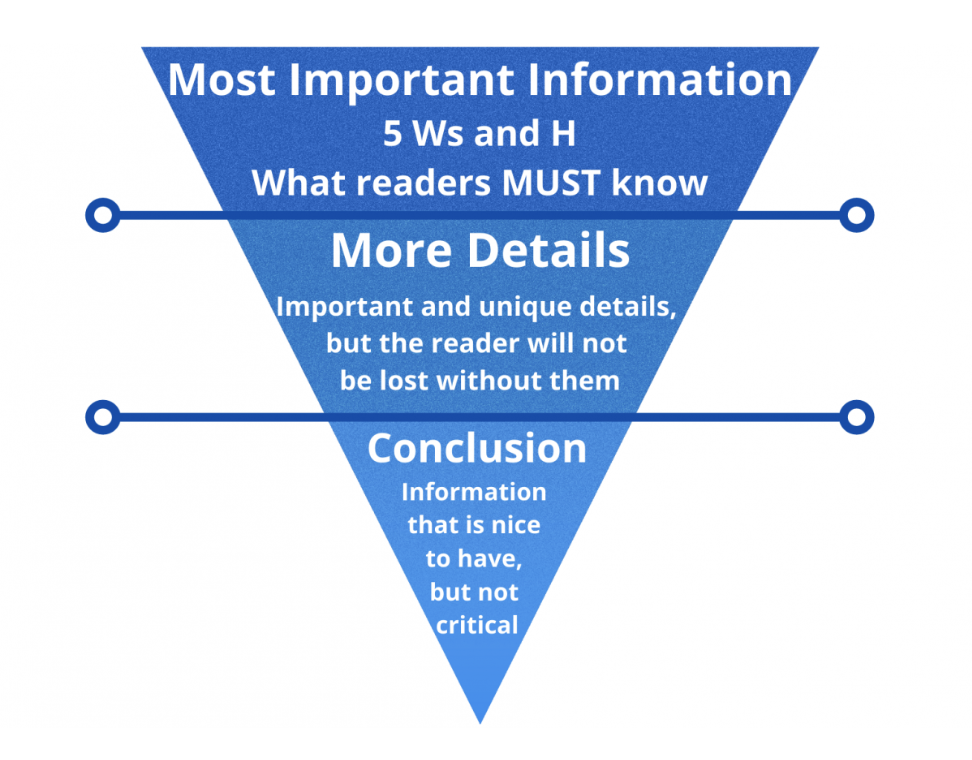A method of information presentation in which information is presented in descending order of importance.
Present critical information first, followed by less-important elaborative information. Use it when presentation efficiency is important.

The inverted pyramid consists of
a lead(critical information):
The lead is a terse summary of 6Ws(What, Where, When, Who, Why, How) of the information.
a body(elaborative information):
The body consists of subsequent paragraphs or chunks of info that elaborate facts and details in descending order of importance. This can be shown on request with ex: more button.
- It places the important information first, where it is more likely to be remembered
- It establishes a context in which to interpret subsequent facts.
- It permits efficient searching and scanning of information
Cons: the inverted pyramid does not allow the flexibility of building suspense or creating a surprise ending, so it is often perceived as boring. It is the opposite to storytelling.
If interestingness is important and has been compromised, include multiple media, interesting layouts, and interactivity to complement the information and actively engage audiences.
When it is not possible to use the inverted pyramid method (e.g., in standard scientific writing), consider a compromise solution based on the principle by providing an executive summary at the beginning to present the key findings.